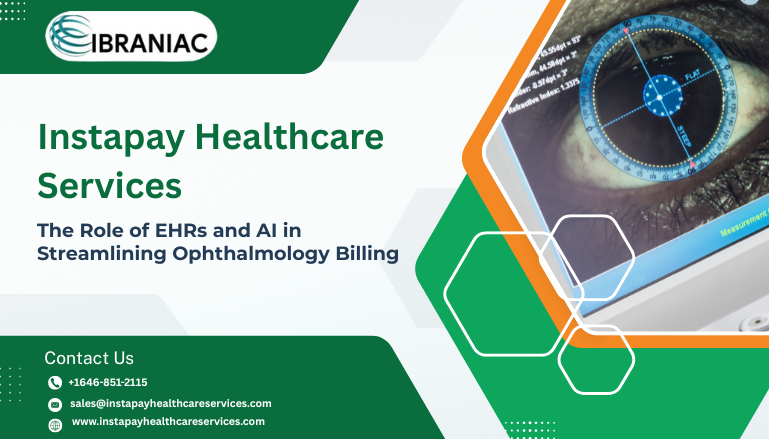
The Role of EHRs and AI in Streamlining Ophthalmology Billing
Ophthalmology billing is one of the most complex areas of medical revenue cycle management. From its intricate diagnostic tests to a combination of medical and surgical services it encompasses, the ophthalmology billing process requires precision, compliance, and efficiency. Many practices, however, still struggle with delayed payments, high denial rates, and administrative burdens. Thankfully, technology is transforming this landscape.
From streamlining operations to maximizing revenue, EHRs and AI for ophthalmology billing are helping practices transform their internal workflows. Here’s how these tools are making a difference.
Why Ophthalmology Billing is not as Easy
Ophthalmology combines medical evaluations, surgeries, and diagnostic testing — each with specific coding and documentation requirements. Practices also have to navigate:
- Global periods for surgeries and bundled follow-up visits.
- Frequent prior authorizations and payer policy changes.
- High patient volume with tight schedules for providers
- Detailed documentation needs for procedures like OCT, fundus photography, and visual fields.
Without robust systems in place, even experienced teams risk coding errors, missed charges, and claim denials — all of which hurt ophthalmology revenue collection.
How EHRs Support Efficient Ophthalmology Billing
Electronic Health Records (EHRs) are more than just digital charts — they’re designed to help providers capture clinical data in ways that support accurate billing.
1. Specialty-Specific Templates
EHRs designed for ophthalmology include templates for common exams and procedures, ensuring all necessary details are documented for proper coding.
2. Real-Time Charge Capture
As physicians complete their notes, charges can be captured in real time and transferred directly to the billing team, minimizing missed revenue opportunities.
3. Integrated Workflows
Modern EHRs integrate with billing and practice management systems, reducing manual entry and errors while speeding up claims submission.
4. Data Insights
EHRs can generate analytics on claim performance, denial trends, and revenue metrics, helping practices make informed decisions to improve cash flow.
By aligning clinical and billing processes, EHRs make ophthalmology billing more accurate and efficient.
How AI Enhances Ophthalmology Revenue Collection
While EHRs organize data, artificial intelligence (AI) takes it further by automating and optimizing billing processes
Automated Coding and Suggestions
AI tools can analyze documentation and recommend accurate CPT and ICD-10 codes, reducing errors and undercoding.
Denial Prevention
By studying historical data, AI predicts which claims are at risk of denial and highlights issues before submission.
Prior Authorization Automation
AI platforms streamline authorization requests, track their progress, and save staff hours each week.
Patient Billing Optimization
AI platforms streamline authorization requests, track their progress, and save staff hours each week.
When combined with EHRs, AI significantly boosts ophthalmology revenue collection, reduces administrative burdens, and improves compliance.
The Future of Ophthalmology Billing
For ophthalmology practices, adopting EHRs and AI for ophthalmology billing is no longer optional — it’s essential to stay competitive and financially healthy. By leveraging these technologies, practices can:
- Accelerate reimbursements.
- Reduce denials and rework.
- Improve patient satisfaction with clear, accurate billing.
- Free up staff time for patient care.
Instapay Healthcare Services specializes in helping ophthalmology practices implement smarter billing solutions. From navigating complex coding rules to integrating advanced technology, our team ensures your revenue cycle is efficient and effective.
Ready to streamline your ophthalmology billing and maximize revenue? Contact us today to learn how we can help.




